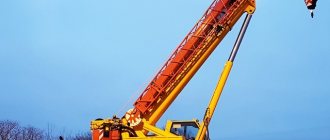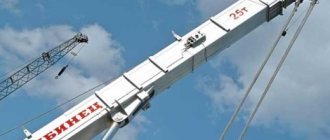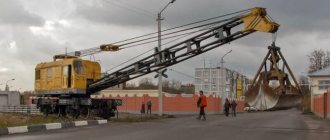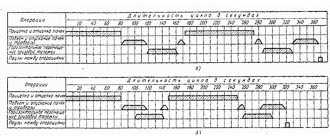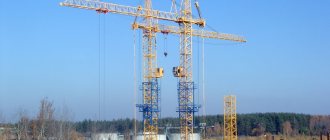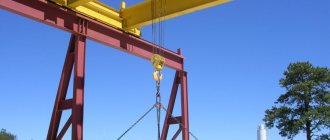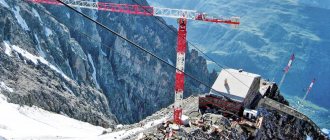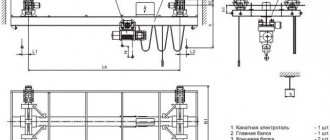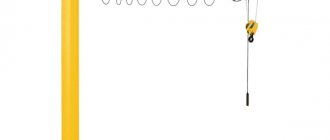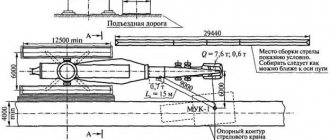Boom functions
The wide range of applications of truck cranes requires various design features of its mechanisms, which allow them to optimally perform tasks often associated with:
- with bulky or heavy loads;
- difficult terrain;
- difficult to reach conditions;
- urban congestion.
The ability to perform these tasks depends on the basic characteristics of the boom. A trolley equipped with a load-handling mechanism moves along its length. The lifting weight will depend on the performance capabilities of the boom. There are several modifications of it that allow you to complete tasks of varying complexity.
Types of truck crane work
Truck cranes are used to perform a variety of types of work. A truck crane is capable of performing a variety of types of work related to lifting and reloading lump, packaged or bulk materials.
They are actively used by utility and repair services, used in construction, reconstruction of buildings and facilities, during rescue operations, etc. The main types of truck crane work are as follows:
- laying pipelines and other utility networks;
- loading into open bodies or wagons;
- unloading from open bodies or wagons;
- Men at work;
- installation of block structures;
- lifting construction materials and equipment;
- moving heavy machinery, cars, metal structures.
These are not all types of work for which truck cranes are used. The versatility and multifunctionality of this special equipment make it in demand in various fields.
Main modifications
The first models of truck cranes were equipped with lattice solid booms on a cable suspension. When installing them, the hook and suspension are reinforced with strong cables. Thanks to the lattice design, they are distinguished by their low weight.
At the same time, telescopic booms formed by several retractable segments are most in demand today. The retractable design is highly flexible and can withstand significant loads. The maximum number of sections that domestic industry can produce today reaches five.
In many cases, it is more convenient to use cranes with tower booms, since they are distinguished by a significant lifting height. This type of equipment is used mainly in the construction of high-volume structures.
History of appearance
The prototype of modern truck cranes are tractors that were powered by steam and served military purposes, such as helping with mobile construction or loading and unloading guns. Similar devices were also used for civilian purposes and in agriculture. Just as in modern times, steam engines helped with loading and unloading.
The first domestic crane (Atp-1) appeared in the early 30s of the last century and had sufficient power to lift a load of 1.5 thousand kg to a height of over 2 meters. Over time, these characteristics became insufficient and the model was abandoned already in the next decade. The new Soviet-made development (Ak-3) surpassed the previous one by an order of magnitude and showed results corresponding to a load capacity of over 4 tons with a maximum height of 4-5 m. Then the war began and the production of construction equipment was curtailed indefinitely. In the early 50s, the country rebuilt new enterprises and production resumed, and over time, the shortage of construction equipment was reduced to a minimum. In the 60s of the last century, Soviet engineers invented an innovative model, the crane worked autonomously from the car system. By the 70s, the approach to the design of such devices changed again; now cranes are designed with a hydraulic drive. At the same time, the design of load-bearing trucks was also updated. The main changes in the new technology were considered to be a modernized chassis with reinforcement and advanced, at that time, car engines, which together made the design the most competitive.
The main specification of modern domestic production of truck cranes is chassis standards for different load capacities. If we take models of the small segment, that is, 16-150 tons, then the chassis standards correspond to Russian ones. Models with high load capacity, that is, over 70 tons, use foreign-made chassis. A similar situation has arisen due to the lack of ability at Russian factories to produce structures designed for high load capacity.
Methods of carrying cargo
Rigid boom of a truck crane
In lifting booms, the load is transferred simultaneously horizontally and vertically by increasing or decreasing the angle of inclination. Due to the design features, cranes with similar modifications are much lighter than other types.
The rigid boom type is characterized by a constant reach length during the operating cycle. The load is moved by the movement of the crane itself, as well as by the rotation of the lifting mechanism. To increase the reach, it is necessary to stop the operation of the truck crane.
In models with a cargo trolley, it moves horizontally. If it is necessary to increase the lifting height, the boom is placed in an inclined position, and a cargo trolley is attached to its end.
Types of truck cranes by cabin type
If we consider all types of truck cranes, we can divide them into two groups based on the type of cabin. She may be:
- stationary;
- unfixed.
The non-fixed cabin, in turn, can also be of different designs, namely:
- hydraulic;
- rotary.
Ivanovets 25 t truck crane with a rotating cabin, transferred to the transport position. The stationary cabin of the truck crane does not move, has a large panoramic glass and is protected by a metal mesh - it should protect the operator and equipment in the event of a possible fall of the load.
The non-fixed cabin has become more widespread. Hydraulic structures can change position to increase visibility for the driver. The most common cabins are rotating ones. When the truck crane is moved from the transport position to the working cabin, it rotates 180 degrees. This was done so that the crane in transport mode would take up less space and fit into the vehicle dimensions.
Design Features
Each node performs its own functions.
Sections . The load-height characteristics of the equipment depend on their number in the telescopic boom. For truck cranes with lifting capacity up to 10 tons, two sections are sufficient. As the carrying capacity increases, another one is added. Four- and five-section models are installed on all-terrain cranes. They can also be equipped with an extension cord.
Telescopic boom
Section . In cross-section, the arrow usually has a rectangular profile, which is easier to assemble. However, its shape can be more complex, for example, trapezoidal, multifaceted or ovoid. With more complex, ovoid profile shapes, the multifaceted boom is equipped with clamps that help it withstand the entire load. The ovoid section became a real breakthrough in crane construction.
Tower arrow . Tower jib cranes are commonly used on high-rise construction sites. The peculiarity of the tower modification is expressed in its use as a support tower, and its direct function is performed by a horizontally directed beak at the end.
The crane boom is a triangular shape, the upper chord of which and the lattice rods are made of pipes, and the lower ones are made of channels
Lattice modification . This type is more complex. Despite the difficulty of their installation, they demonstrate greater load capacity than telescopic ones.
Additional details . During the lifting operation, the weight of the load is supported by cylinders. To transfer the load to the boom, special clamps are used. The functionality of all-terrain cranes is enhanced by extensions and jib joints.
Gusek . Many models are equipped with a jib extension, to the end of which another hook is attached. This structure looks like a refracted structure with two hooks. The use of a jib allows you to increase the load capacity without resorting to renting more expensive equipment. It is attached with hinges to the main boom of the truck crane when lifting heavy types of equipment - industrial equipment or antennas.
How a tower crane assembles itself
Tower cranes are used in the construction of multi-story buildings. The tower itself acts as a support, and the horizontally directed beak directly carries out the main function.
Lattice cranes have a number of installation difficulties, however, compared to telescopic cranes, they have a greater load capacity.
How does a tower crane lift itself? Using hydraulic pistons. The section of the tower crane located under the cabin is thicker than the others. When you need to assemble, this section, due to hydraulic pistons, “grows” to the height of one segment. At this time, the crane lifts one segment and places it in the space created after lifting the cabin on hydraulic supports. The simplicity of the way a tower crane lifts itself allows the process to be repeated as many times as needed to assemble very tall structures.
How the tower crane assembles itself is shown in the photo below.
How a tower crane assembles itself - step 1
How a tower crane is assembled - step 2
Basic parameters
Arrows differ in their technical characteristics, which should be taken into account when choosing a model:
Main settings
- load capacity indicates the maximum weight that is permissible for a given type;
- its length is an important indicator, which is measured between the fifth and the extreme point of the head;
- the magnitude of the angle of movement;
- the boom radius is determined by the distance between the axes of the load and the crane installation, its value is the smallest at maximum lift;
- the lifting height of the hook can be calculated by knowing the reach and rise; this indicator is also affected by the presence of supports;
- units of measurement of the speed of movement of cargo – m/min.;
- departure modification time, that is, the period during which it moves in the opposite direction.
1.11. Instruments and safety devices installed on cranes
Hide advertisements in article
Hide advertisements in article
Load capacity limiter (load moment)
- a device that automatically turns off the drive of the load lifting mechanism if the permissible load capacity of the crane is exceeded, and in cranes with variable load capacity - the moment created by the weight of the load.
Limit switch
is
a safety device designed to automatically shut off the drive of the crane mechanism when its moving parts exceed the established limits.
Reach limiters
serve to automatically disable the outreach mechanism (boom outreach) when the boom approaches the minimum and maximum working outreach.
Lifting height limiter hook a
serves to automatically disable the hook lifting mechanism when it approaches the upper extreme position.
Turn limiter
The rotating part of the crane serves to prevent rotation of the rotating part of the crane in one direction more than twice, in order to prevent breaks in the live wires that transmit electric current to the motors.
Load capacity indicator
installed on jib cranes, in which the lifting capacity varies depending on the reach of the hook.
The device shows the lifting capacity, which helps prevent the crane from being overloaded.
Angle indicator
installed on jib self-propelled and trailed cranes, with the exception of cranes operating on rail tracks. The tilt angle indicator is designed to control the installation of the crane. The angle of inclination in any direction during operation should not exceed the value specified in the crane passport. Instead of an inclination angle indicator, an inclination angle indicator can be installed.
Interlock contacts
designed for electrical blocking of the entrance door to the crane cabin, the hatch cover for the entrance to the bridge deck, etc.
Anemometer
designed to automatically determine the wind speed at which work must be stopped and to activate emergency devices.
ASON-1
alarm device is designed to notify you when a crane boom approaches an electrical network with voltage over 42 V.
When approaching the electrical network, an EMF is induced in the antenna, which enters the amplifier unit.
Anti-theft devices
are used when operating tower and gantry cranes to prevent them from moving under the influence of wind load and derailing.
Outriggers
used to increase the stability of self-propelled jib cranes.
Brakes
are used on the actuators of cranes to reduce their rotation speed, stop them completely, hold the load suspended in a stationary state and stop the crane in a certain place.
Shoe brakes are mainly used, as they are simple in design and reliable in operation.
Dead end stops
are used to prevent the crane from derailing.
Buffer devices
used to soften possible impacts against stops or against each other (rubber cushions, wooden blocks, springs or hydraulic devices).
Removable fences
are used for work safety. All easily accessible parts of the crane that are in motion (gear, chain and worm drives, couplings, drums, shafts, running wheels on rails, all live parts) are protected by durable metal removable guards.
Platforms, stairs and mobile platforms
serve to provide safe access to control cabins, electrical equipment, safety devices, mechanisms and metal structures of cranes.
Lighting devices and sound signals are also required to be installed on all cranes.
Other articles from the section “Chapter 1. Lifting cranes and devices”:
·
1.1.
General information ·
1.2.
Self-propelled jib cranes ·
1.3.
Tower cranes ·
1.4.
Overhead cranes ·
1.5.
Gantry cranes ·
1.6.
Cable taps ·
1.7.
Helicopter cranes ·
1.8.
Portal cranes ·
1.9.
Hook suspensions of cranes ·
1.10.
Lifting devices > ·
1.11.
Instruments and safety devices installed on cranes ·
1.12.
Rejection standards for elements of lifting machines ·
1.13. The main causes of accidents and accidents during the operation of lifting machines
Navigation: Home | Other books | Reviews:
Telescopic models
The device of a telescopic boom and the operation of an all-terrain vehicle crane
With the expansion of the scope of use of self-propelled jib cranes, their working mechanisms began to improve. If the first models were equipped with lattice modifications with cable suspension, today truck cranes are equipped with telescopic booms. Their movable design allows not only to increase the load capacity of the truck crane, but also to move freely along the highway in the flow of ordinary cars.
Lattice models had a simple design; their production did not require complex technological operations. To lengthen it, special inserts were used, which required additional time and effort. With the advent of telescopic booms on hydraulic cylinders, a real revolution took place in the production of boom truck cranes.
General characteristics of jib self-propelled cranes and their classification
Hide advertisements in article
Hide advertisements in article
Self-propelled jib cranes are widely used in the construction industry due to their maneuverability and the ability to work without installing a special crane runway. They are used mainly for installation and loading and unloading operations.
Each jib crane consists of the following assembly units: a chassis with a running device, a fixed frame, a rotating platform connected to the base chassis through a slewing bearing, a drive unit, actuators and working equipment.
The main mechanisms of a self-propelled crane are: a mechanism for lifting loads, changing the reach of the hook, mechanisms for rotating the platform and moving the crane. Heavy-duty cranes have two lifting mechanisms - one for large and one for small loads.
Each crane has a cabin for the crane operator with a control panel located in it. Some cranes have two cabins, one of which is used to control the movement of the crane, and the second to control lifting operations. The cranes are equipped with a set of control safety equipment.
The working equipment of self-propelled jib cranes is made in the form of a rope-suspended straight boom, a rope-suspended boom with a jib, a rope-suspended telescopic (see Fig. 65), a rigidly suspended telescopic (Fig. 101.6), as well as in the form of a tower boom equipment (Fig. 101, a).
Jib cranes equipped with booms with a controlled jib ensure that loads can be lifted to great heights with a significant hook reach. However, the inclined position of the boom narrows the possibilities of using the space under the boom by size L (see Fig. 101, a). When using tower-boom equipment, the service area in plan increases by 2 times.
Rice. 101. Diagram of jib equipment for jib self-propelled cranes
a - straight boom and tower-boom equipment; b - rigidly suspended telescopic boom
The main parameters of jib self-propelled cranes for general purposes are standardized by GOST 9692 - 71. This GOST provides the following standard range of lifting capacities of jib cranes: 6.3; YU; 16; 25; 40; 63; 100; 160 and 250 tons. The indicated lifting capacity of jib cranes is the maximum permissible with a minimum boom radius, which is established by the same GOST.
Technical requirements for the quality of jib cranes are established by GOST 11556 - 71, and the terminology related to them is GOST 15135 - 69.
According to the design of the running gear, self-propelled jib cranes are divided into automobile cranes, mounted on a standard automobile chassis; tractor, the base of which is a standard tractor; pneumatic; pneumatic tires of automobile type; tracked and railway.
In each of these groups, cranes are classified by lifting capacity, type of power equipment (diesel or carburetor engine), type of drive from the power plant to the actuators (mechanical, electrical, hydraulic), type of working equipment, type of boom (straight, telescopic, jib boom , tower with arrow).
To designate models of jib cranes, an indexing system has been adopted, consisting of the letters KS, indicating that the machine belongs to jib cranes; four numbers and two letters.
The first serial digit after the letters KS indicates the load-carrying capacity group, which corresponds to a certain load-carrying capacity value.
Load capacity group…….
| 1 | 2 | 3 | 4 | 5 | 6 | 7 | 8 |
| 4 | 6,3 | 10 | 16 | 25 | 40 | 63 | 100 |
The second serial digit indicates the type of running equipment, with the caterpillar drive being designated by the number 1, the wide track track - 2, the pneumatic wheel - 3, the automobile-type chassis - 4, the automobile - 5, the tractor - 6, the trailed - 7.
The third ordinal number indicates the type of boom equipment: number 6 means rope-suspended, 7 means rigidly suspended, 8 means telescopic sliding. The fourth serial digit indicates the next model number.
The letter following the numbers indicates the modernization number, and the last one - C, T (or TV) corresponds to the type of execution - northern, tropical and tropical wet.
For example, the brand of machine KS-5463BS means: a crane with a lifting capacity of 25 tons, on an automobile-type chassis, with rope-suspension boom equipment, the third model, the second modernization, in the northern version.
Other articles from the section “Jib cranes”:
> ·
General characteristics of self-propelled jib cranes and their classification
·
Automotive cranes
·
Pneumatic wheel cranes
·
Stability of self-propelled jib cranes
Navigation: Home | Other books | Reviews:
Telescopic modification device with ovoid profile
The telescopic boom consists of:
Telescopic ovoid boom
- grounds;
- steel sliding sections;
- a mechanism for changing its length;
- devices that fix retractable segments.
To extend the sections, hydraulic cylinders and pulleys are used. To reduce the friction force when they extend, sliding plates are installed. Lateral movement of the extended parts is prevented by stops and pads. For effective operation and protection of parts from rust, anti-rust mastic is used; you can buy BKM mastic in specialized stores.
An important technical parameter is the profile of the telescopic boom. The invention of the ovoid section became possible with the development of computer technology. The upper, lower and side sections of the section of the retractable sections operate under different types of loads:
Ovoid profile of the boom of a truck crane
- the upper part experiences tension;
- lower belt – compression;
- the side parts are curved.
The ovoid profile became a combination of different geometric shapes - rectangular and ellipsoidal. Thanks to this connection, it received the name ovoid. The production of an ovoid section requires high-tech equipment and special grades of steel.
Ovoid arrows made it possible to significantly improve its technical parameters. Their advantages are:
- in high local resistance;
- low metal consumption;
- high safety margin;
- resistance to heavy loads, which allows you to increase their length.
Ovoid booms effectively withstand all types of loads, and today are successfully used in the production of jib cranes.
How does ASC with hydraulic control work? (see pic)
The ASK hydraulic drive is used to perform the following operations: changing the length of the telescopic boom by extending sections; lifting and launching a hook with a load; control of the boom rotation angle; rotation of the platform with cabin and boom by 3600;
The operation of raising and lowering the boom and rotating the boom can be combined with rotating the platform or with extending and retracting sections of the telescopic boom. The hydraulic cylinders for extending the outriggers and the hydraulic cylinders for blocking the car suspension springs can be controlled autonomously.
The telescopic boom can contain several retractable sections. Sections are box-section beams, incl. a non-retractable section that is hinged to the turntable. At the front end of the outer section, blocks of a cargo pulley or a crane suspension are installed. The extension and retraction of the telescopic boom sections is carried out by a double-acting hydraulic cylinder and, with several sections, this occurs in a certain sequence.
The ASK cargo winch consists of a rope drum and a drive: a hydraulic motor, a gearbox and a band brake. Adjusting the hydraulic motor speed allows you to lift and lower the load at different speeds.
The rotating platform is installed on the running frame of the vehicle chassis using a rotating support. The platform rotates using a hydraulic motor, gearbox and brake. The output shaft of the gearbox is equipped with a gear that meshes with the gear wheel of the slewing bearing. Hydraulic motors receive pressure from hydraulic pumps, which, in turn, receive torque from the power plant of a diesel vehicle, through the gearbox and transfer case.
The vehicle's travel mechanism receives torque from the transfer case when the pumps are turned off. Oil under pressure is supplied from the pumps through pipelines to the hydraulic equipment in the operator's cabin, through a rotary connection. The operating parts of the ASK are controlled by the operator from the cab using hydraulic distributors. The operating pressure in the system is maintained at 12-16 MPa.

